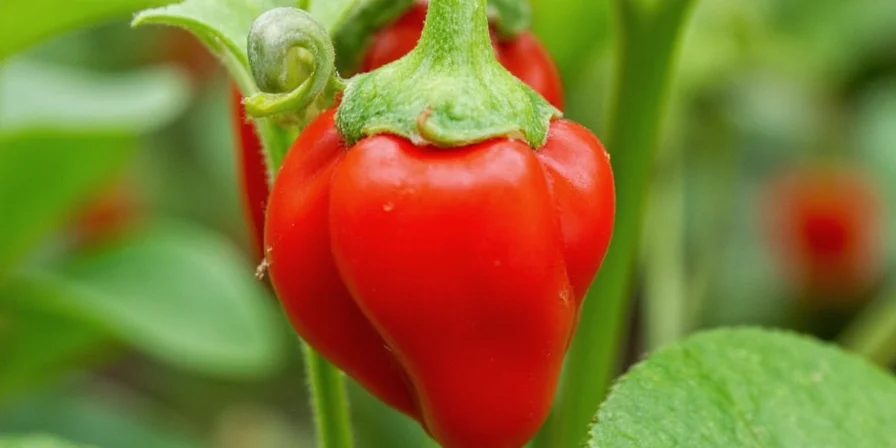Are Ornamental Chili Peppers Edible? Your Complete Beginner's Guide
Yes, most ornamental chili peppers are technically edible, but many varieties are extremely hot and not bred for culinary use. The key difference isn't appearance—it's heat level and flavor profile. While safe to eat, many ornamental varieties pack 5-10 times more heat than jalapeños, making them impractical for cooking. This guide answers your most urgent questions with practical, tested advice from horticulture experts.

Why Gardeners Love Ornamental Chili Peppers
Ornamental chili peppers solve three common gardening problems: they add vibrant color for months, naturally repel pests without chemicals, and thrive in containers where other plants struggle. Unlike regular peppers, they produce abundant colorful fruits that change from purple to yellow to red throughout the season—all while requiring minimal care once established.
- Perfect for small spaces: Compact varieties grow beautifully in 12-inch pots on patios or balconies
- Natural pest control: Capsaicin deters aphids and spider mites within a 5-foot radius
- All-season color: Fruits mature at different rates, creating multi-colored displays
- Beginner-friendly: More resilient than culinary peppers with fewer disease issues
| Basic Care Requirements | Simple Guidelines |
|---|---|
| Sunlight | 6+ hours of direct sun (south-facing window indoors) |
| Watering | Water when top inch of soil feels dry (never daily) |
| Soil | Any potting mix with good drainage (add 20% perlite) |
| Fertilizer | Balanced liquid fertilizer every 4 weeks during growing season |
| Winter Care | Bring indoors before first frost; place near sunny window |

Can You Eat Ornamental Chili Peppers? The Truth
While technically edible, most ornamental varieties are too hot for practical cooking. Here's what you need to know:
| Variety | Edible? | Safety Tips |
|---|---|---|
| Black Pearl | Yes (mild) | Use sparingly in salsas; wear gloves when handling |
| Chilly Chili | No | Extreme heat (50,000+ SHU); decorative only |
| Bishop's Crown | Yes | Fruity flavor works well in small quantities |
| Medusa | No | Primarily ornamental; very hot with little flavor |

Important safety note: Always wear gloves when harvesting ornamental peppers. The oils can cause skin irritation and accidentally transferring them to your eyes creates intense burning that lasts hours. If you do get oil on your skin, wash immediately with soap and cold water (not warm, which opens pores).
Top 5 Beginner-Friendly Varieties
These varieties consistently perform well for new growers based on university horticulture trials:
- Black Pearl: Purple foliage with black-to-red fruits; thrives in containers; mild heat
- Bishop's Crown: Wing-shaped fruits; sweet-heat balance; great for garnishes
- Golden Coral: Bright yellow-orange curved pods; ideal for hanging baskets
- Explosive Ember: Firework-like color display; extremely easy to grow
- Chinese 5 Color: Fruits change through 5 colors; longest blooming season

Common Problems Solved in 5 Minutes
Fix these frequent issues with simple solutions:
- No flowers? Move to sunnier spot or apply bloom-boosting fertilizer (5-30-10)
- Leaves turning yellow? Usually overwatering—let soil dry between waterings
- Fruit dropping? Hand-pollinate with small brush during morning hours
- White powder on leaves? Spray with 1:9 milk-to-water solution for mildew
Where to Buy Ornamental Chili Peppers
You'll find these at most garden centers in spring, but for unique varieties:
- Local nurseries: Best for seeing live plants; ask about overwintered specimens
- Online retailers: Burpee, Park Seed, and Baker Creek offer specialty varieties
- Seed options: Start seeds indoors 8-10 weeks before last frost date
- Cost saving tip: One healthy plant can produce cuttings to grow multiple plants
Frequently Asked Questions
How often should I water ornamental chili peppers?
Can I grow ornamental peppers indoors year-round?
Do ornamental peppers come back every year?
Why are my ornamental peppers not producing fruit?
Final Tips for Success
Start with one easy variety like Black Pearl in a 12-inch pot with drainage holes. Place in your sunniest spot and water only when the soil feels dry an inch down. You'll see flowers in 6-8 weeks, with colorful fruits following. Remember that ornamental peppers naturally lose leaves in winter but will return stronger in spring with proper care. They make excellent companion plants for tomatoes and eggplants, helping repel common pests while adding stunning visual interest to any garden space.












 浙公网安备
33010002000092号
浙公网安备
33010002000092号 浙B2-20120091-4
浙B2-20120091-4